You May Also Like
Choosing A Staple Gun For Your Project
Senco Staple Guns Paslode Nails, Staples & Screws Projects & Applications Demos & Comparisons Articles Stanley Bostitch Flooring Tools & Fasteners Upholstery How-To Instructions
September 29, 2015 32
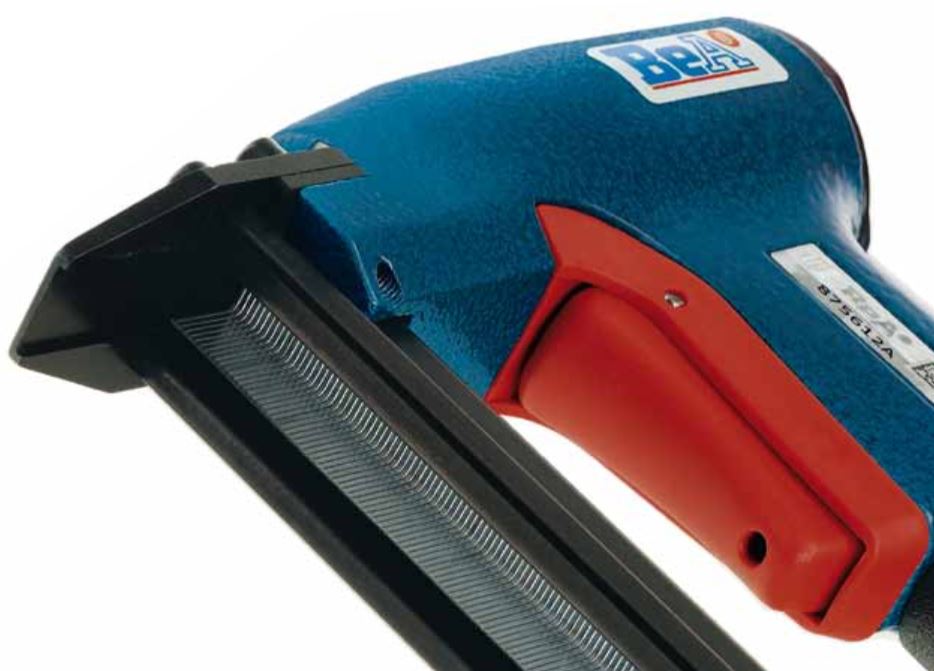
Everything you need to know about staple guns. Learn the difference between gauge and crown, what makes one type stapler different from another, and most importantly, which stapler is the best one for you.
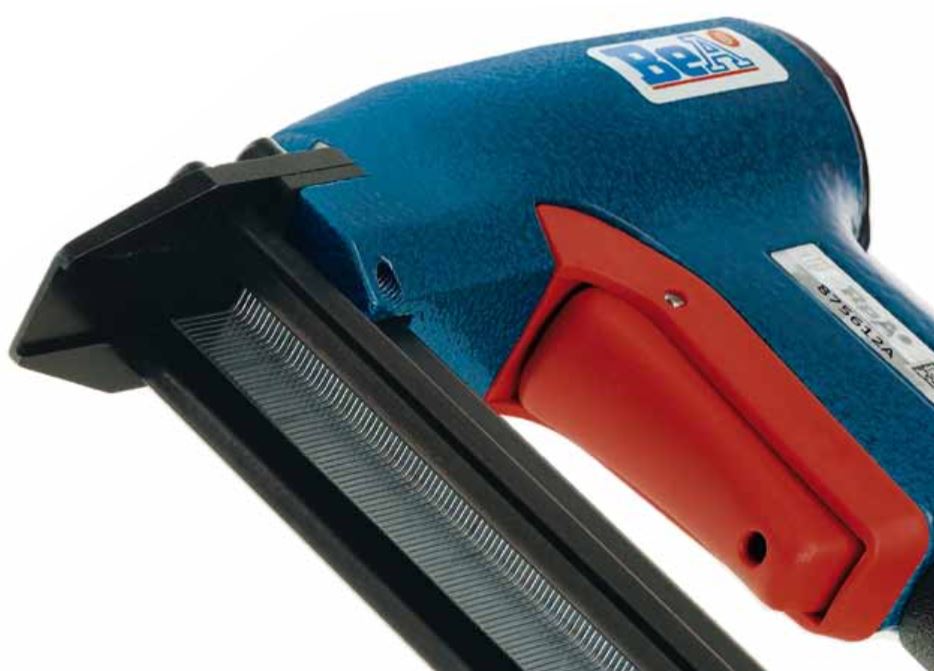
What Type Of Staple Gun Do I Need?
- Construction Stapler: When you think of a staple gun, the first thought that might come to mind is a construction stapler - in other words, not your average office stapler. Most construction staplers look very similar to a nail gun, and they typically aren't far off in operation - that is, until you load your fasteners into the magazine. Construction staplers vary in size, depending on the project you need them for. Finish staplers are great for trim work - while heavy-duty construction staplers can be used for sheathing, cabinet framing, furniture construction and more.
- Upholstery Stapler: Upholstery staplers and fine wire construction staplers maintain similar characteristics - in fact, there's even a slight category overlap in some 20 gauge models - so it's important that you make sure the tool you purchase is intended for the correct application. Some upholstery staplers are intended specifically for upholstering applications, while others leave some room for versatility. To make upholstering easier, some models of upholstery stapler come with a long nose, for reaching into tight spaces.
- Flooring Stapler: Flooring staplers, again, look very much like their flooring nailer counterpart. Flooring staplers are designed for the installation of hardwood and engineered wood flooring. Hardwood floor staplers come in two variations - either mallet actuated or trigger actuated. A mallet actuated flooring stapler requires the strike of a rubber mallet to drive the staple into place. Carpet staplers are more of a mixture between hammer staplers and upholstery staplers.
- Packing Stapler: Carton closing staplers - also known as packaging staplers - are designed specifically for corrugated box closing applications, typically associated with packing and shipping. Carton closing staplers come in several variations, ranging from air-powered (pneumatic), to cordless battery - or even manual - operation. The size of corrugate you are intending to staple will determine the size of staple and stapler you require. For applications in manufacturing or assembly line production, packaging staplers are also available in bench-mounted and clinch stapling variations, designed for repetitive, high-volume use.
- Hammer Stapler: Hammer staplers, also known as hammer tackers or slap staplers, are manually actuated tools that require the striking of a surface to operate - in the same manner as a hammer. Hammer staplers are generally used in carpet, insulation, housewrap and roofing felt installation.
- Cap Stapler: Cap staplers are most commonly found in the roofing industry. These specialty staplers operate the same as a regular staple gun, but also drive a plastic cap in tandem with the staple. The cap provides greater holding power and offers added protection for the staple. Cap staplers are used for roofing felt, housewrap, foam board and other select applications.
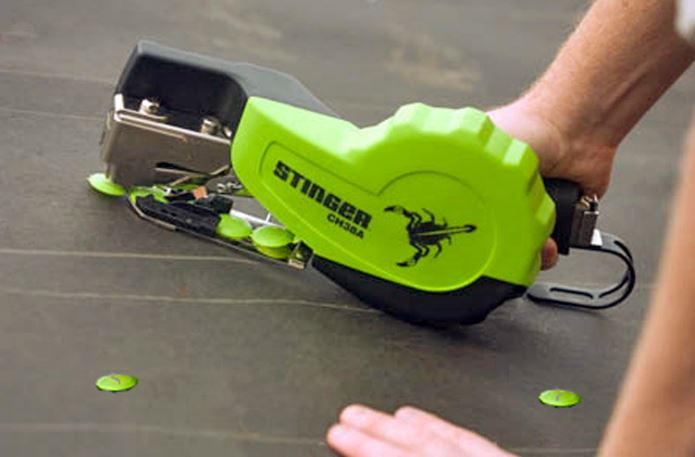
What Crown Stapler Should I Choose?
- Narrow Crown: Narrow crown staplers are generally used for finish and trim applications, such as molding, trim, cabinets, drawers, fascias and other fine-grained applications. The smaller crown allows the stapler to penetrate a surface without being overly noticeable.
- Medium Crown: Medium crown staplers are preferred in subflooring, pallet building, vinyl siding, furniture assembly, sheathing and similar applications. A medium crown offers a wider range of clinch, but is not quite as rugged as a wide crown.
- Wide Crown: Wide crown staplers and staples are intended for heavy-duty use - primarily in construction, for projects in truss building, housewrap, roofing, lathing and more. Look to use a wide crown stapler for many of the same applications as a medium crown, but where it doesn't matter if the staple affects the appearance of your project. Wide crown staples are bulkier, but offer greater holding capability.
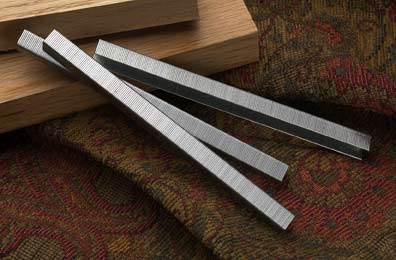
What's The Difference In Wire (Gauge) Type?
- Fine Wire: Fine wire staples are the thinnest variation of staple, generally ranging from 20 - 22 gauge in thickness. It's important to note, that the gauge and crown of staple are two different things. The gauge is the thickness of the staple, whereas the crown is the width.
- Medium Wire: Medium wire staples are generally measured in the 18 - 19 gauge range of thickness. Medium wire will provide more holding power than a fine wire staple, but is not the best option for heavy-duty applications in construction.
- Heavy Wire: Heavy wire staples are the thickest variation of staple, mostly found in 15 - 16 gauge thickness. Heavy wire will provide the greatest holding power of the three, but will also take up the most area when fastened. Heavy wire staples are good for applications that require stapling to a thick surface.
Other clamp fastening tools serve as extended family to the staple gun, such as hog ring pliers, corrugated fastening tools and flaring staplers; however, these specialized tools are typically intended for industrial use or manufacturing.
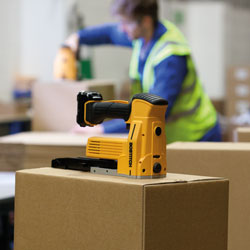
Just as you should with any other power tool, be sure that safety is your top priority when using a staple gun. Always be aware of your surroundings, how you handle the tool, and make sure you are equipped with the proper safety gear.
~The Nail Gun Depot Team



If you need a new staple gun to apply the window felt, we would need to know the gauge of the metal in order to recommend the best <a href="https://www.nailgundepot.com/staplers/manual-hammer-staplers/plier-staplers" rel="noopener" target="_blank">plier stapler</a> for the job. Without more information about the specific vehicle and door panel, it's difficult to provide a more detailed recommendation.
Please let us know if you have any further questions or concerns, contact us at sales@nailgundepot.com
any help will be appreciated.
canvas beneath.Aluminum roof - square tube frame thickness is approx 1/16th and upto 1/8th aluminum; Staples cannot be longer than 3/4" at most and corrosion resistant. Pneumatic T50's have not been successful.
Pop-up Camper Aluminum roof edge installation;
Thanks in advacne
We recommend an 18-gauge stapler, particularly the <a href="https://www.nailgundepot.com/bea-9225553-18-gauge-stapler-12-to-1-details.html" rel="nofollow">BeA 92/25-553</a>. The tool drives a 5/16" crown (medium crown) staple and is suitable for a wide range of applications, including use with RVs. The pneumatic stapler drives <a href="https://www.nailgundepot.com/bea/staples/92-series" rel="nofollow">92-series staples</a>. Good luck!